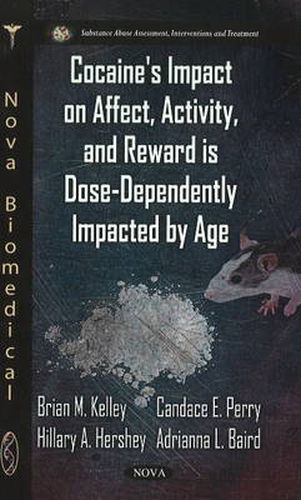Readings Newsletter
Become a Readings Member to make your shopping experience even easier.
Sign in or sign up for free!
You’re not far away from qualifying for FREE standard shipping within Australia
You’ve qualified for FREE standard shipping within Australia
The cart is loading…






This book examines the impact of different doses of cocaine on three interrelated measures related to affective behaviours between adolescent and adult mice in order to assess the range of affective and rewarding responses, measure of despair, activity, and reward were used. Such methods included the forced swim test (FST), motor activity (MA), and the conditioned place preference (CPP) tests, respectively. Cocaine was selected, in part, because of its robust psychostimulant properties, its use by millions of substance abusers world-wide, and its well understood mechanism of action. This study may help explain some of the neurobiological underpinnings of these finding because cocaine was especially effective in reducing despair-related behaviour in adolescence compared with adults, yet less effective in as an euphoric agent.
$9.00 standard shipping within Australia
FREE standard shipping within Australia for orders over $100.00
Express & International shipping calculated at checkout
This book examines the impact of different doses of cocaine on three interrelated measures related to affective behaviours between adolescent and adult mice in order to assess the range of affective and rewarding responses, measure of despair, activity, and reward were used. Such methods included the forced swim test (FST), motor activity (MA), and the conditioned place preference (CPP) tests, respectively. Cocaine was selected, in part, because of its robust psychostimulant properties, its use by millions of substance abusers world-wide, and its well understood mechanism of action. This study may help explain some of the neurobiological underpinnings of these finding because cocaine was especially effective in reducing despair-related behaviour in adolescence compared with adults, yet less effective in as an euphoric agent.